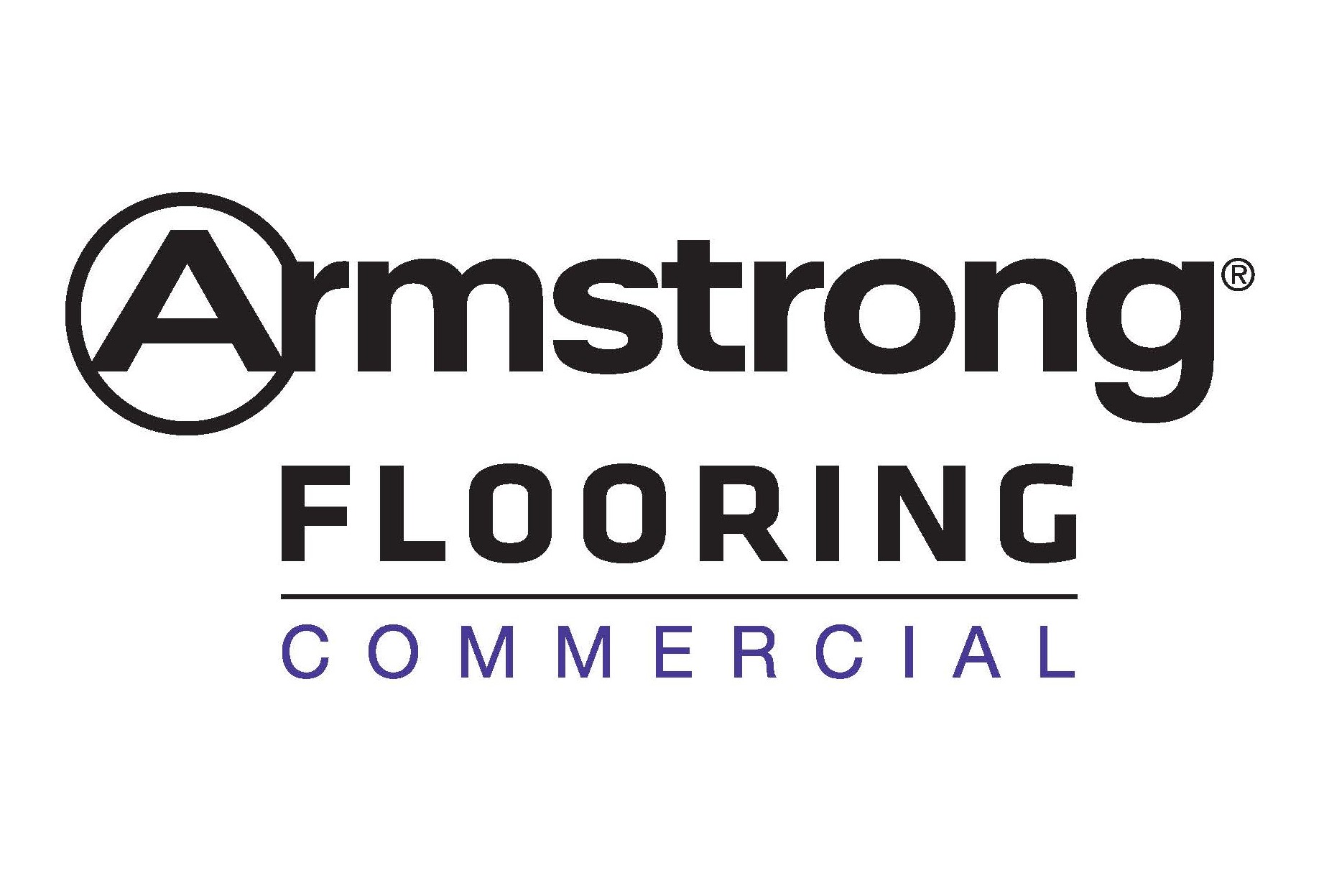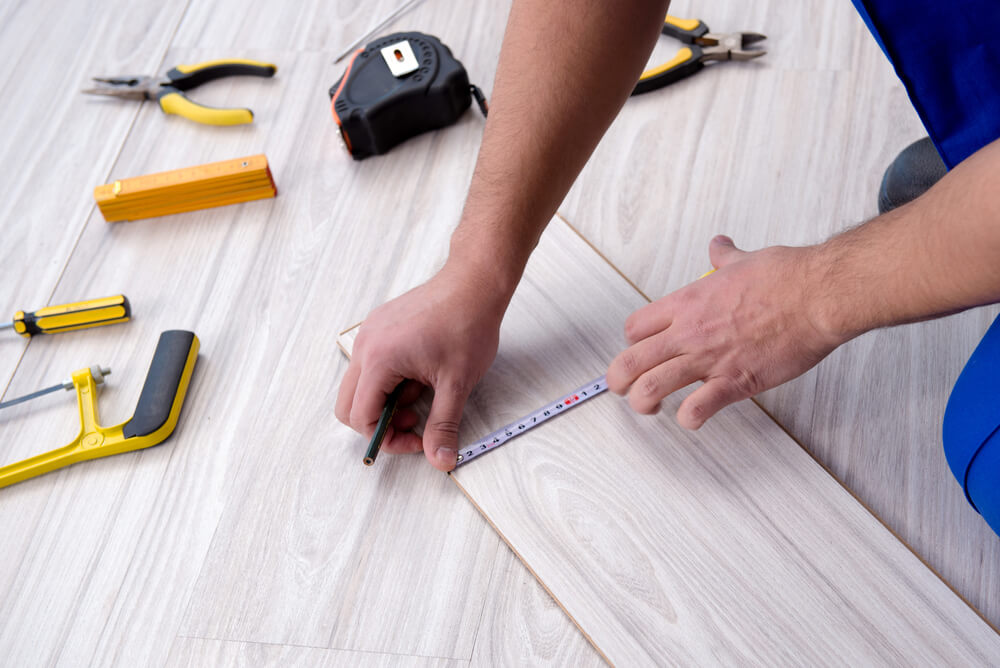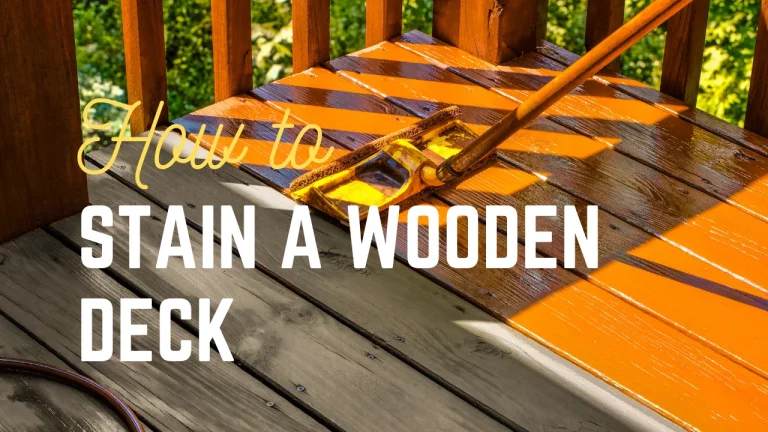Best Laminate Flooring Reviews and Buying Guide 2023
So, you’re finally ready to update your old flooring! We spent 27 hours researching everything there is to know about laminate flooring and testing to find the best brands on the market regarding durability, long-lasting quality, and price. No need for you to waste any more time weeding through the possibilities because we’ve already done it for you. All five of the brands we reviewed are loved by professionals and DIYers alike. Don’t wait any longer, check out the skinny on five of the top brands of laminate flooring below.
Best Overall Laminate Flooring

Armstrong Flooring
Armstrong is a company that’s built on a legacy that stretches back over 150 years. Thomas Armstrong started out as a two-man cork cutting shop in Pittsburgh, Pennsylvania in 1860 and to this day, Armstrong Flooring is holding strong as a leader and manufacturer of innovative flooring solutions. The name Armstrong is well-respected in the flooring world, and we love that they are working hard, pioneering ways to recycle and conserve resources to help conserve the planet.
Best High-End Laminate Flooring
Mohawk

Mohawk laid down their first flooring product – carpets – in 1878. They’ve been at it a long enough to know how to do it right. The name is a leader in the flooring industry including laminate flooring. Today they continue their long-standing tradition of quality flooring products with their award-winning design and outstanding service. The company is dedicated to environmentally responsible practices which we love!
Most Well-Known Laminate Flooring
Pergo
The Pergo brand is the international division of the Swedish company Perstorp which became famous for inventing laminate flooring in 1977. Perstorp international division sells under the brand name Pergo which it brought to the United States in 1994. Throughout its history, Pergo has managed to maintain a high degree of quality and is known for being a top-quality product in the flooring industry. Customers look for the name Pergo because they know they won’t go wrong choosing it. Pergo has one of the highest costs in the industry, but you’ll quickly understand why as their products bar none.
Best Budget Laminate Flooring
Quick-Step
Quick-Step is creating high-quality flooring, with some of the best consumer warranties available, right here in the United States. Unlike many of their competitors, they are producing planks up to 54 inches in length to create a more authentic look in your home or office. They offer a residential limited lifetime warranty that covers staining, wearing and fading that is unparalleled in the industry.
Laminate Flooring Buying Guide
What is Laminate Flooring?
Redoing your floors can be a big-ticket item when it comes to remodeling. However, the ‘wow’ factor is profound when you redo your floors, and you’ll be thrilled with the new, fresh, clean look they provide.
Budget is always a big concern, and flooring companies know this. In recent years there has been a surge in laminate flooring choices because they compete in price with solid hardwood planks. Manufacturers know that many customers want the look of hardwood without the high price that goes with it.
Laminate is a flooring product that is constructed of a dense fiberboard with a high-resolution wood grain image on top to simulate genuine hardwood boards. This image is covered with a protective clear-coat layer that is durable enough to resist scratching and can stand up to discoloration from sunlight. Often this clear-coat layer is stronger and therefore better than most hardwoods and standing up to wear and tear.
Laminate flooring is constructed in layers. The bottom-most layer is called the ‘backing,’ and it is designed to resist moisture that could damage or warp the boards.
The next layer up is the ‘inner core.’ This layer is made from a high-density fiberboard material that is held together with a resin that is designed to resist any further moisture issues or damage.

On top of the ‘inner core’ is the image layer. This is where the high-resolution, digital image of wood, metal, stone, or other material adheres. Often, higher quality laminates will also add a texture layer here to enhance the look of real wood further.
Finally, the top layer, the ‘wear’ layer, is applied. This layer is a clear coat layer that protects the product from scratches, fading, and everyday wear.
Each one of these layers can be manufactured with varying degrees of quality. It’s important to know what you’re getting and to choose reputable manufacturers that use honest marketing.
It’s also best to know the manufacturer’s AC Rating to understand the best-intended use for the board you’re looking at buying. In general, the higher the AC Rating, the more durable the boards will be over time.
Once the boards are manufactured, they are cut into varying lengths, and one side is grooved, and the other is slotted. This allows the boards to click, or snap together forming what is a bit like a large “puzzle” that floats above the subfloor.
Certain brands even have matching trim pieces to complete your remodel and make your new floor come together beautifully.
Things to Consider
AC Rating – The AC rating measures the durability of the surface of the laminate flooring. AC ratings go from AC1 to AC5. Less expensive floors often have a lower AC rating such as AC1 or AC2. However, for general residential use, it is recommended to use at least an AC3 rated floor.
| AC Rating | Usage | Best Usage |
| AC1 | Light | Adult Bedrooms, Guest Rooms |
| AC2 | Moderate | Living Rooms and Dining Rooms |
| AC3 | General | Residential Kitchens and Small Offices |
| AC4 | Heavy | Restaurants, Busy Offices, Hair Salons |
| AC5 | Commercial | Department Stores, Grocery Stores, Public Buildings |
Width – Flooring comes in a wide array of sizes and shapes depending on the style you choose. Wood-plank laminate, for example, generally ranges from 4 inches to 8 inches wide. Ceramic tile laminate usually ranges from 12 inches to 15 inches and can either be square or rectangular. Be careful when making your choice and be sure to consider the size and look of your room. Wide widths and larger squares can overwhelm a small room, so select a size that works with the design of your home.
Thickness – Thickness is important because the thicker the flooring, the more it will sound like a natural hardwood floor. A thinner floor will remit more sound versus absorbing the sound as thicker, real-wood floor would do. Thicker floors also tend to be more durable than a thinner floor.
Locking System – Be sure that the flooring you choose has a quality locking system. Without a good quality system, you could be in jeopardy of the floor losing its long-term hold, moisture resistance. It will also be more difficult to install the flooring, which can be quite tricky as it is.
Gloss – Decide if you like a high-gloss or low-gloss look before choosing your laminate. Both options give a very different look to a room. Try to pick the finish that fits your décor and taste the best. Either way, the gloss should have very little effect on the durability of the flooring. The only exception would be that a low-gloss finish many hide small scratches better than a high-gloss floor.
Durability – Many laminate flooring materials are manufactured in a range of performance levels. At the highest performance level, you will find commercial grade products that can stand up to heavy wear and tear. Lower level products will be cheaper and only able to handle light and residential use. Know the amount of traffic you expect on your floor and choose your product accordingly.
Underlayment – The underlayment is a layer of protective product that you install on your subfloor before installing the laminate flooring. The underlayment layer will provide further protection from moisture and will dampen sound. This layer can also help your laminate sound like solid wood when you walk on it.
Cost – Laminate flooring can cost anywhere from $0.99 up to $8.00 and even beyond for custom, high-end products. However, most laminate will cost from $1.99 to $4.99 a square foot depending on design and quality. The cost also depends on the thickness and quality of the image and texture. Trust your eyes when choosing to pick a laminate that looks and feels like the real thing.
Warranty – Rest assured that laminate is durable and long-lasting. It was purposely designed with those aspects in mind and as an affordable alternative to hard wood. Be sure to check manufacturers’ warranties and know what all they cover. Many brands have products that are warranted for decades. Armstrong, for example, has laminate warranties that range from 20 years to lifetime, depending on which product you install.
Advantages of Laminate Flooring
Since its invention in 1977 by Swedish company Perstorp, laminate flooring has steadily climbed its way to becoming one of the top flooring choices of many builders and homeowners. It has risen so much in popularity that the first laminate flooring brand, Pergo, has had its name become synonymous with the product itself.
Laminate flooring is designed to be more water resistant than traditional hardwood flooring yet is designed to have the look of a natural hardwood floor. It is easy to clean and can stand up to a variety of cleaning products that can’t be used on hardwood floors.
One of the main reasons that laminate is so sought-after is its price. Laminate flooring is a fantastically durable material at about half the cost of genuine hardwood. All of this, along with a large scope and variety of options to choose from have made it one of the top products on the market.
One of our favorite advantages of installing laminate flooring is how simple it is to install! In fact, the installation is so simple that it’s like snapping together a jigsaw puzzle. Cutting the pieces to fit your room will probably be the most challenging aspect of the installation. The fewer obstacles and angled cuts you have, the easier and faster the flooring will be to install.
However, it’s still a project that can be completed by your average DIYer in a weekend or two – depending on the size of your room.
How to Install Laminate Flooring
For the sake of this guide, we will discuss installation starting from the point where you have cleared your floor of any past flooring. (Be sure to read How to Remove Laminate Flooring in this guide to complete this step). You will also need to have checked it for level across at least a six-foot span, and cleared the surface of any residual nails, tack strips or glue. These preparatory steps are essential to success and cannot be missed.
Also, please note you should always buy a bit more flooring than you’ll ultimately need. You’ll want to be sure you have enough in case of a mistake such as a miscut. Buy 10% to 15% extra, and you should be fine. This will also give you a bit extra if you ever need to replace a board in the future.
- Acclimate your flooring. Place your flooring in the room where you will install it and follow manufacturer’s instructions as to how long to wait. The generally accepted amount of time is two to four days. This will allow the laminate to settle into its new surroundings and take its permanent shape.
- Determine your layout. Measure the room and determine its longest wall. Flooring is generally laid parallel to the main view of the room which is usually along the longest wall. By laying the flooring in this direction, the room will appear larger. After measuring, you will also be able to determine how many rows you will need to install and how wide the last row will be. No row should be less than 2 inches, so plan accordingly and cut down your first row a bit if you need your last row to be wider.
- Prepare the door frames. Undercut your door frames and any location along the wall where you won’t be able to use shoe molding (the decorative trim used to cover any space between your base molding and the floor.) Undercut it enough so that your flooring can fit underneath and not leave any gap.
- Install the underlayment. Lay out your underlayment being sure to cover the floor completely. This step is critical for reducing both sound and moisture once the flooring is installed. Be sure
- to completely tape the seams and don’t leave any gaps.
- Lay out your first piece. Lay the first row completely without installing it to check how big the last piece in the row will be. Generally, you want the first row to have at least a 12-inch piece at both the beginning and at the end of the row. Trim accordingly to make sure this happens.
- Snap in your first row. Using a rocking motion, snap the tongue and groove of each end together by using firm, even pressure. Be sure everything is flush and flat, or problems will build up later during installation.
- Line up your next row. Being sure to stagger your joints, lay out the next row and snap the long end into place first, followed by tapping the short end into place with the use of a rubber mallet. It’s best to tap the mallet against a spare piece of flooring that is butted against the piece you’re installing. This will protect it from any dings or nicks and will keep the tongue and groove intact.
- Repeat installing rows. Continue following the same process you used in the last row and continue to install rows using a systematic and staggered pattern. Always lay out each row before snapping it into place to be sure you like the look and layout of each piece. Tighten each end piece by using a pull bar which allows you to strike away from the wall while still applying pressure to tighten the board. This will close any gaps you have in the row.
- Beware of tricky spots. Tricky spots can include small spaces that jut out from the floor or spots where you’ll need to make special cuts to get the flooring to fit. One example would be under a door frame.
- Finishing touches. Finally, you can reattach your baseboards if you removed them and install shoe molding if it’s needed. Finish by caulking and painting whatever is needed. Lastly, stand back and admire your work!



